Yakitori chicken (焼き鳥) is one of Japan’s most beloved street foods. Literally meaning “grilled chicken,” it refers to skewered chicken grilled over charcoal. Originating from Japan, yakitori has become a staple in izakayas (Japanese pubs), food stalls, and specialty yakitori shops. Today, it’s not only a favorite in Japan but also enjoyed worldwide, from Asian BBQ restaurants to home kitchens looking for an authentic grilled chicken on charcoal recipe.
What makes yakitori special is its simplicity: bite-sized pieces of chicken skewered, grilled over hot charcoal, and seasoned with either salt (shio) or a savory-sweet soy-based sauce (tare). The smoky flavor from charcoal and the balance of seasoning create a dish that feels both rustic and refined.
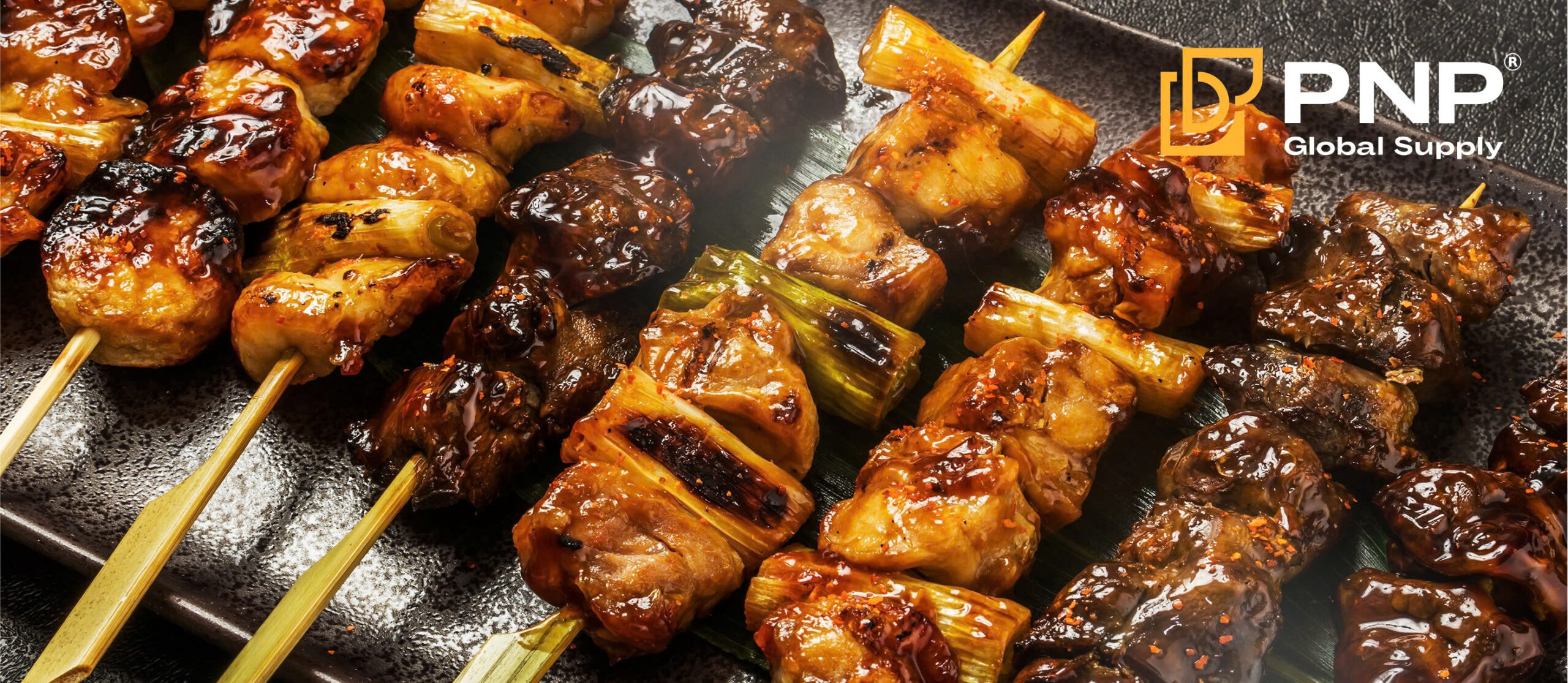
Types of Yakitori Skewers
One reason yakitori chicken is so popular is the variety. Almost every part of the chicken can be turned into skewers, offering different textures and flavors. Common types include:
- Negima (ねぎま) – Chicken thigh pieces alternated with Japanese scallions (negi).
- Momo (もも) – Juicy chicken thigh skewers.
- Mune (むね) – Chicken breast, lighter but still flavorful.
- Sasami (ささみ) – Tenderloin fillets, often seasoned lightly with salt.
- Bonjiri (ぼんじり) – Fatty, juicy tail meat.
- Kawa (皮) – Crispy chicken skin.
- Tsukune (つくね) – Ground chicken meatballs seasoned with soy and ginger.
- Tebasaki (手羽先) – Chicken wings on skewers.
- Organ skewers – Heart, liver, and cartilage are also popular in traditional yakitori shops.
This diversity makes yakitori not just a dish but an entire culinary experience.
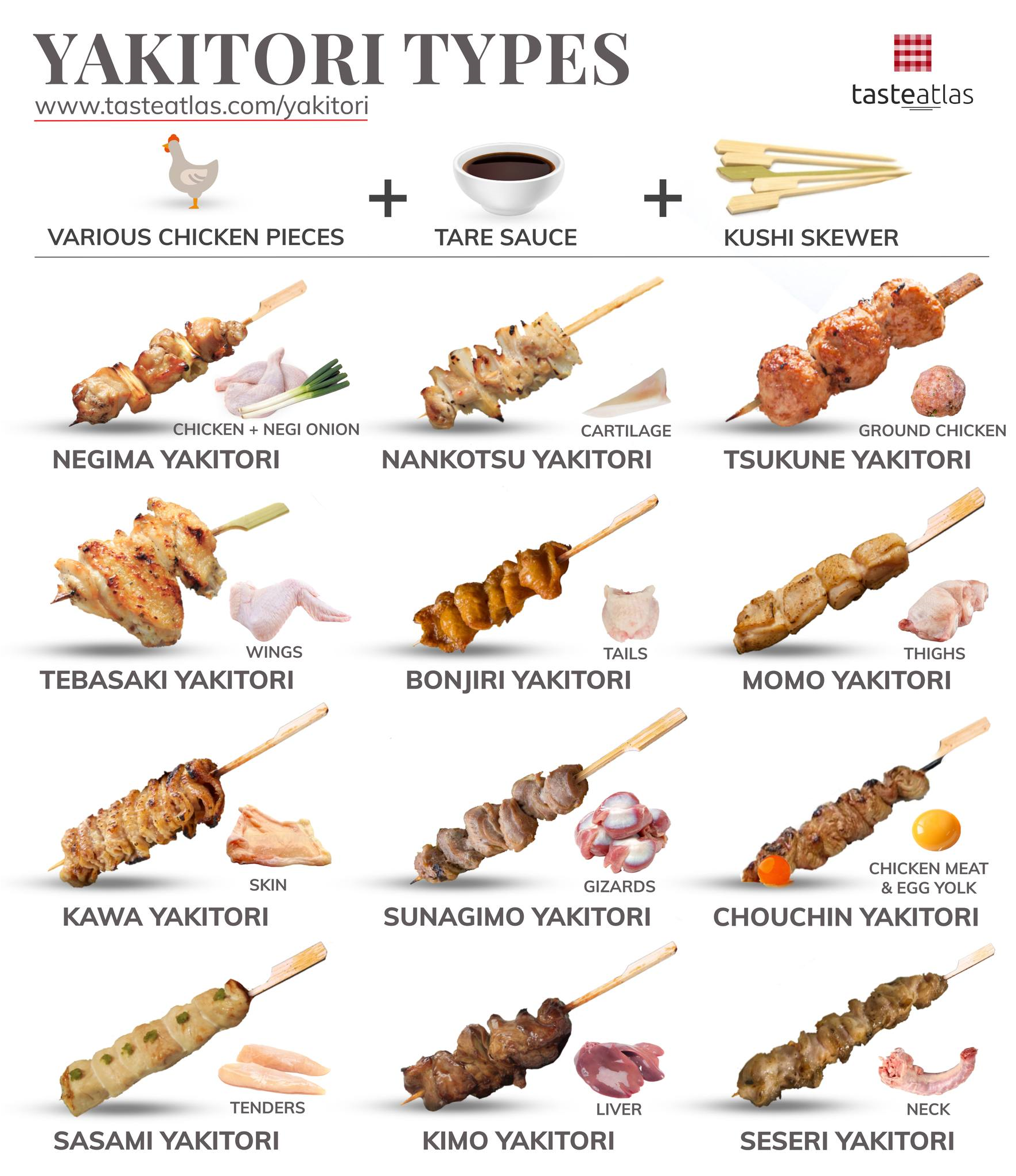
Yakitori Skewers
Traditional yakitori chicken is always cooked on bamboo skewers. The most commonly used type is called marugushi (丸串), which is a thin round skewer, about 3mm (⅛”) in diameter and pointy at one end so the chicken threads easily. The standard length is around 15 cm (6”), perfectly designed to fit a yakitori grill, which is about 10 cm (4”) wide.
Some shops also use 18 cm (7”) skewers, which are easier to handle when eating.
Other traditional skewer types include:
- Hiragushi (平串, flat skewer) – Flat and squarish, good for holding meat more securely.
- Teppōgushi (鉄砲串, gun-shaped skewer) – Often used for tsukune (chicken meatballs) because the flat edge prevents the meat from slipping.
Yakitori chefs carefully choose skewers depending on the cut of chicken being grilled.
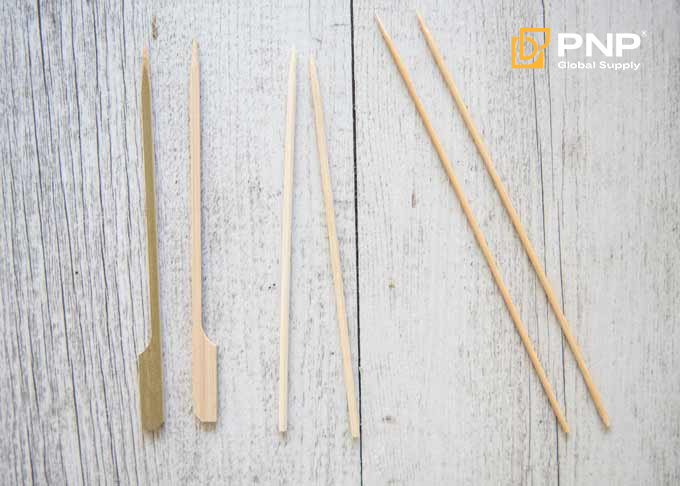
Yakitori Grill
For authentic results, yakitori chicken is usually cooked on a specialized yakitori grill. This grill is long and rectangular, lined with stones inside to hold the heat and prevent the metal from overheating. The narrow width (about 10 cm / 4”) matches the standard skewer length of 15 cm, so the chicken sits neatly above the glowing charcoal.
A konro grill is the most common choice, especially when using sawdust briquettes or binchotan charcoal for grilling. These fuels burn evenly and produce radiant heat, which is ideal for grilling skewers quickly without drying out the meat.
Though smaller than Western BBQs, yakitori grills are highly efficient. They allow you to cook skewers in rows, manage heat precisely, and achieve the smoky aroma that defines true yakitori.
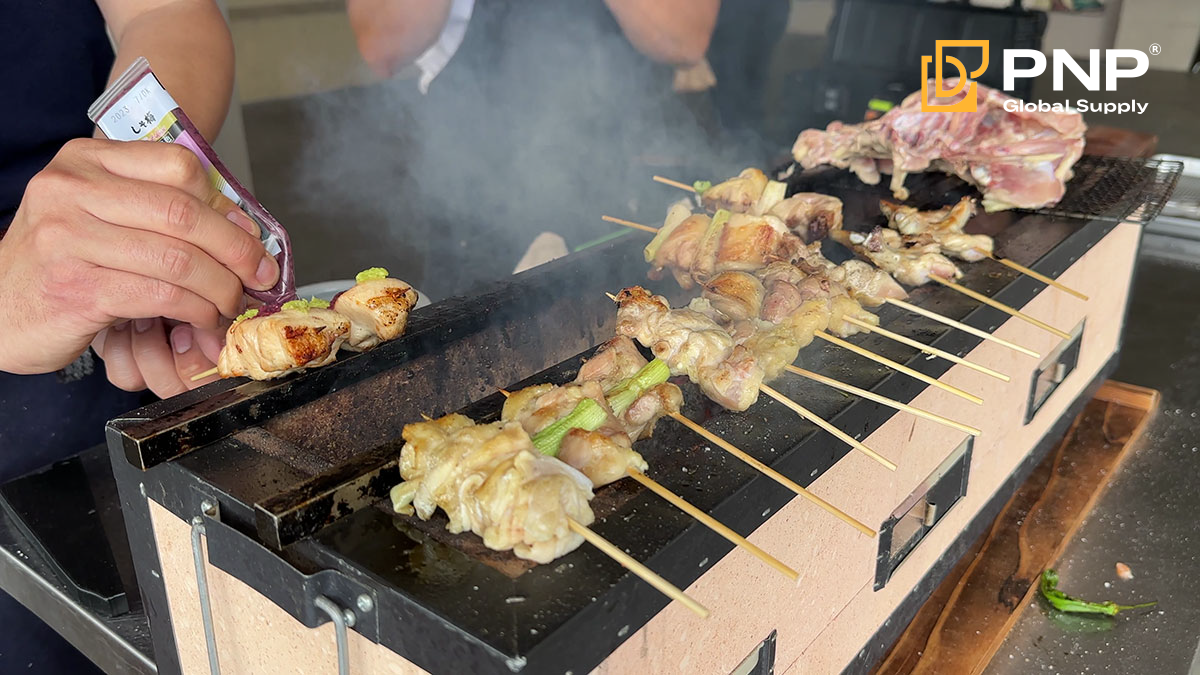
Seasoning for Grilled Chicken
There are two classic ways to season yakitori:
- Shio (Salt) – The simplest and cleanest style. Just sprinkle salt during grilling.
- Tare (Sauce) – A glaze made from soy sauce, mirin, sake, and sugar, brushed onto skewers while cooking.
Unlike many other BBQ dishes, yakitori is usually not marinated beforehand. Instead, seasoning is applied as it grills, which preserves juiciness and allows a beautiful caramelized finish.
Step-by-Step Grilled Chicken on Charcoal Recipe
Making yakitori chicken over charcoal requires attention to detail. Here’s a simple but authentic method, starting with momo.
Ingredients
- Chicken thigh fillets
- Green onion stems
Make the Sauce
- Add soy sauce, mirin, and sugar to a pot.
- Bring to a boil, then reduce heat to medium-low.
- Simmer about 5 minutes until reduced by one-third.
Prepare Momo Skewers (Chicken Thigh)
- Soak 15 bamboo skewers in water for 30 minutes.
- Cut 750g (1.7 lb) chicken thigh fillets into 2.5cm / 1” cubes.
- Thread about 5 chicken pieces onto each skewer.
Grill Over Charcoal (Konro)
- Place skewers 5–6cm (2–2½”) above hot charcoal
- Lightly baste skewers with sauce, grill 4 minutes.
- Flip, baste, and cook another 4 minutes.
- Flip again twice, basting each time, cooking 30 seconds per side.
- Remove from grill, serve immediately.
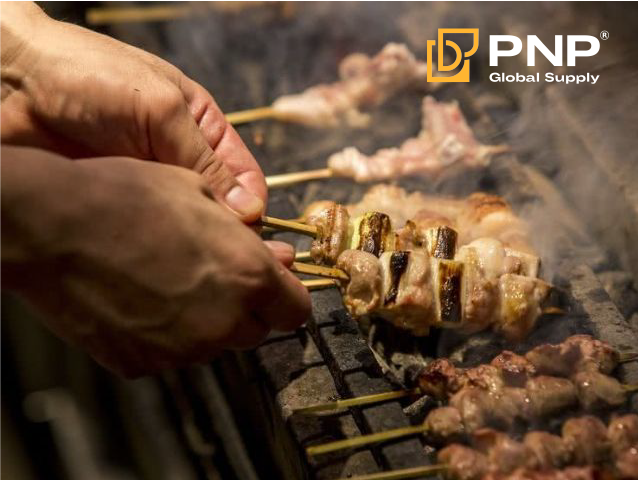
Pro Tips
- Keep chicken pieces uniform for even cooking.
- Soak skewers at least 30 minutes before use.
- Flip often to prevent burning and to let smoke flavor penetrate.
- For extra shine, brush with tare just before serving.
Why Charcoal Choice Matters
The flavor of yakitori depends heavily on the charcoal:
- Sawdust briquettes – Affordable, long-lasting, and widely used in professional kitchens. Perfect for restaurants that need consistent heat.
- Binchotan charcoal for grilling – Premium Japanese-style white charcoal. Burns cleanly, with extremely high heat and almost no smoke, delivering a pure chicken flavor with subtle smokiness.
When paired with a konro grill, both types provide the steady, radiant heat that makes yakitori taste authentic. If you’re new to charcoal cooking, check out our guide: How to Start BBQ Charcoal Grilling for Beginners
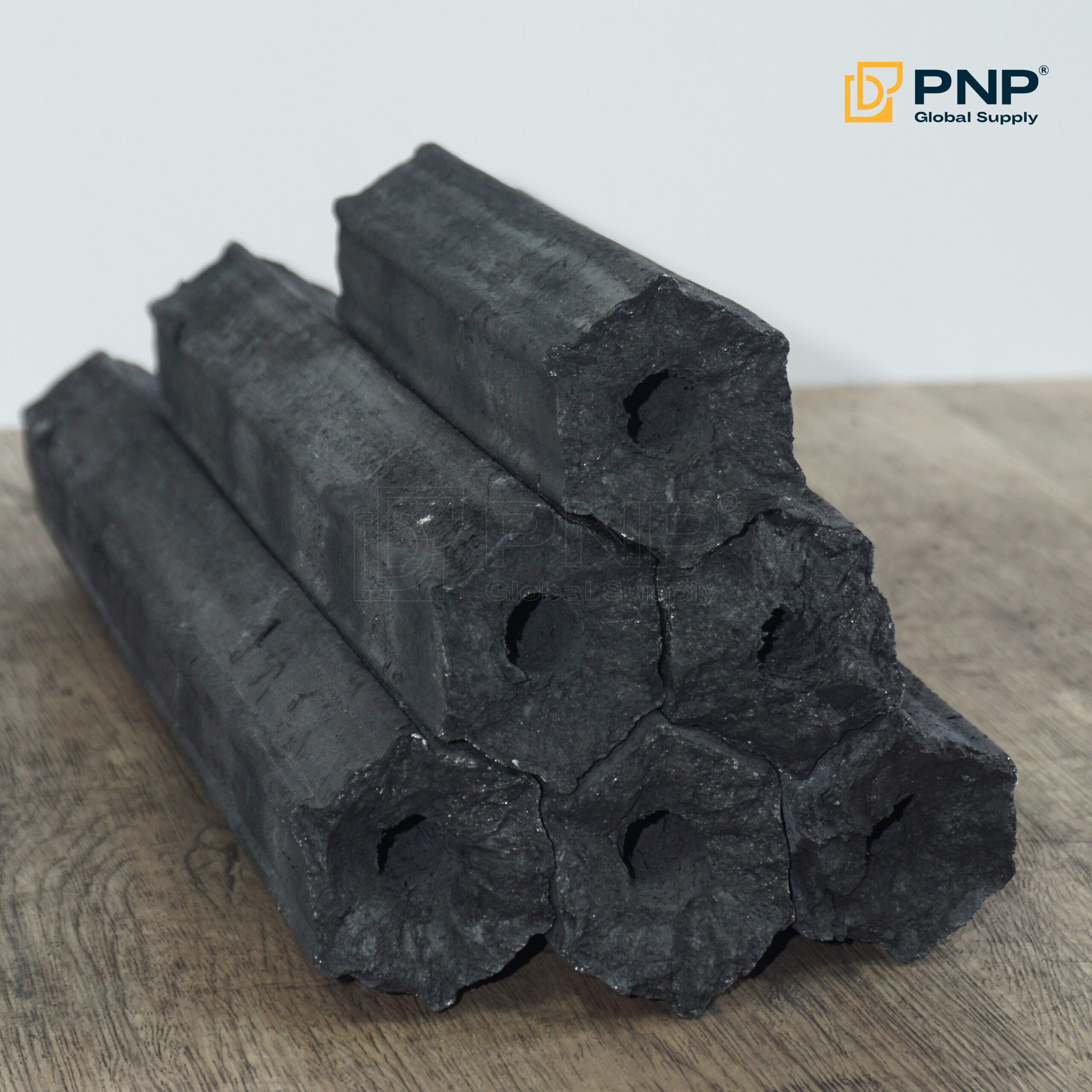
Price of Charcoal & Where to Buy
The price of charcoal varies depending on type and origin. While binchotan is more expensive, sawdust briquettes are a cost-effective alternative for daily use.
For reliable supply, PNP Charcoal is a trusted charcoal supplier providing both sawdust briquettes and white charcoal suitable for yakitori restaurants, BBQ shops, and home chefs. Their products ensure consistency in burning time and flavor – essential for professional kitchens.
In Conclusion
Making yakitori chicken is all about balance – fresh chicken, simple seasoning, and the right charcoal. Whether you use sawdust briquettes or premium binchotan, grilling over a konro brings out the authentic taste of Japan. And with suppliers like PNP Charcoal, you can always count on high-quality fuel to achieve the perfect skewer.
________________________________
Contact us for more information
Facebook: PNP Charcoal
Instagram: PNP Charcoal
Email: info@pnpglobalsupply.com


